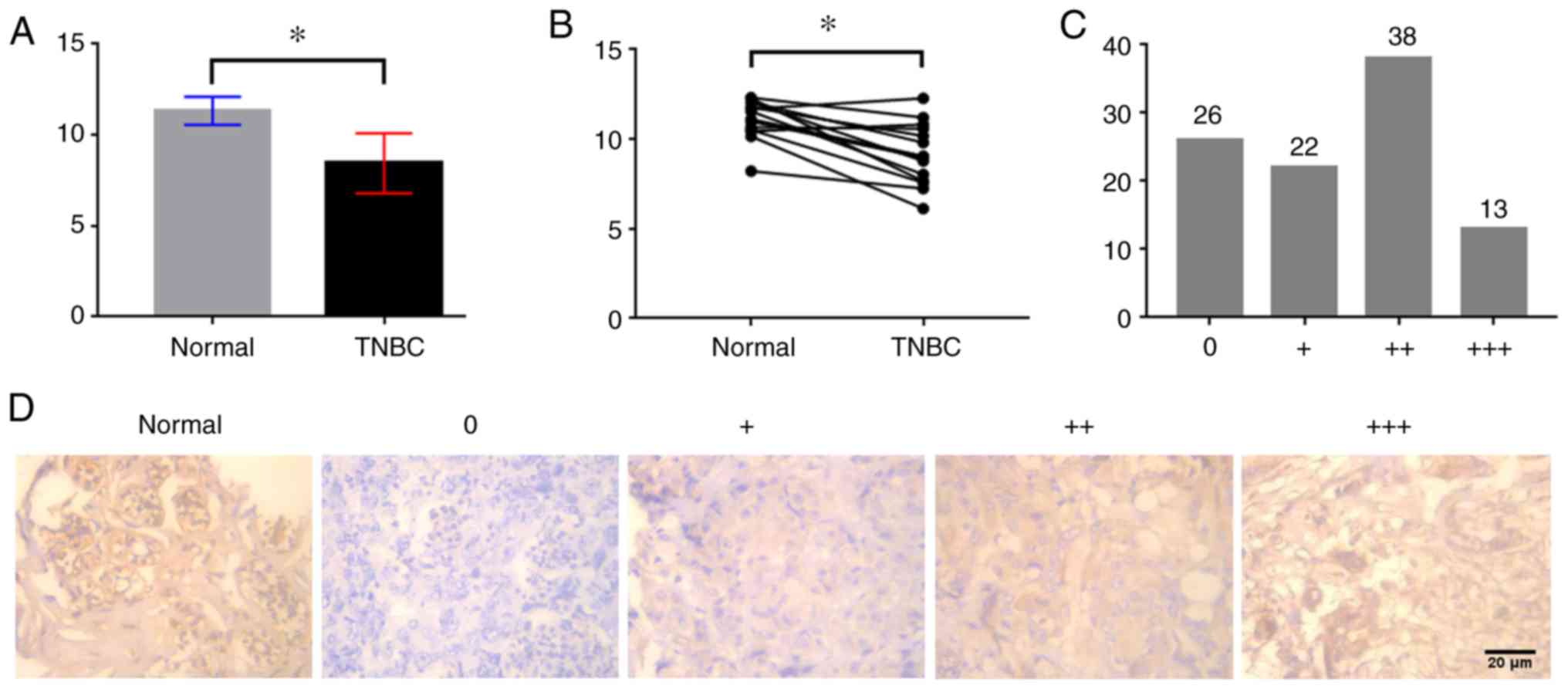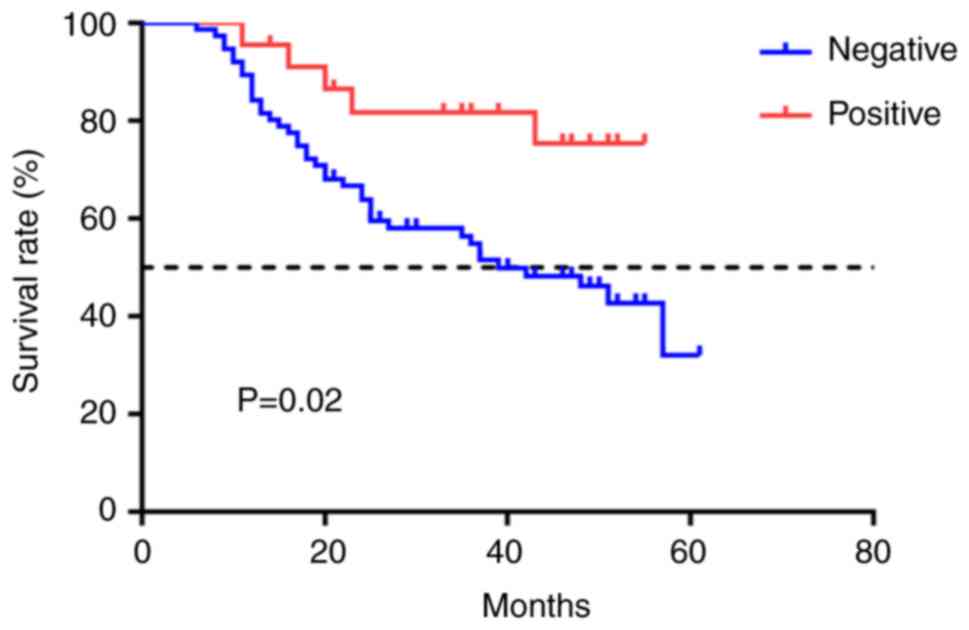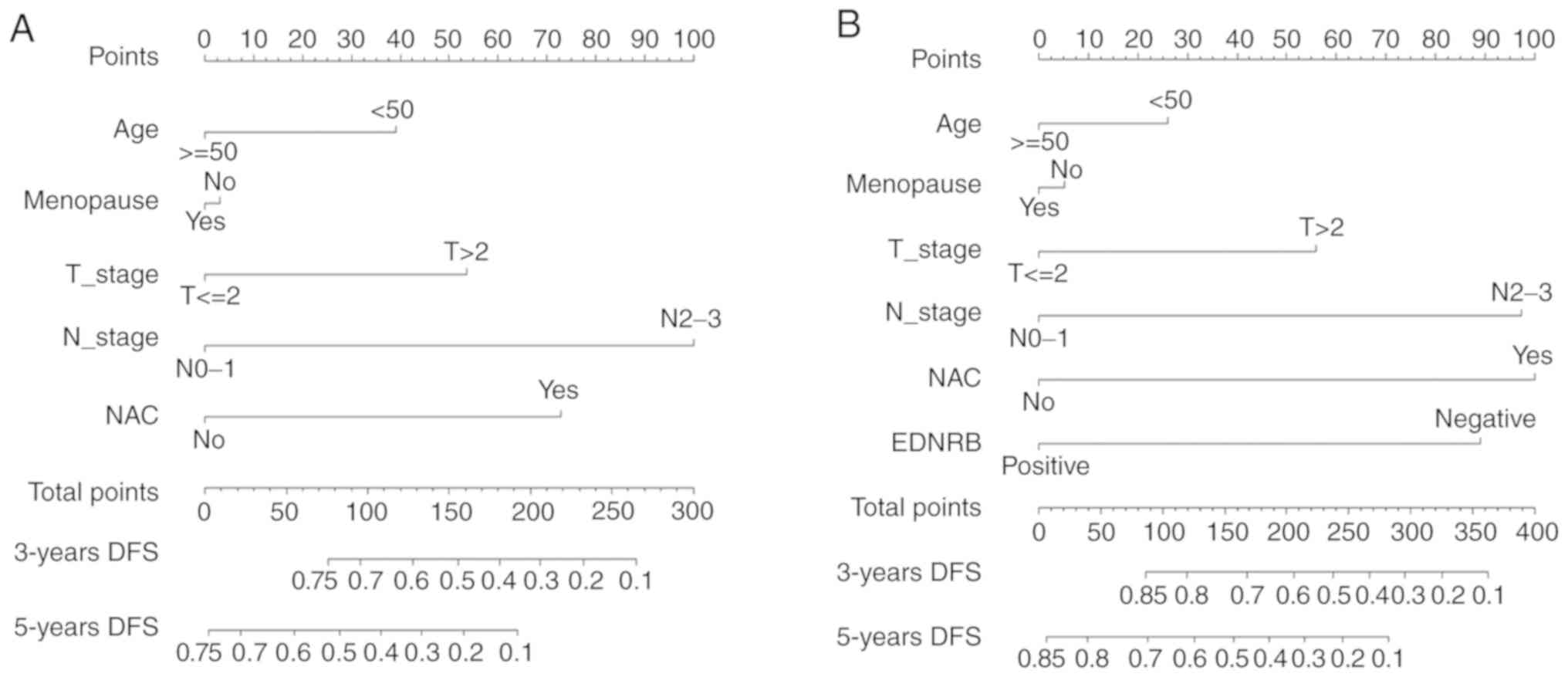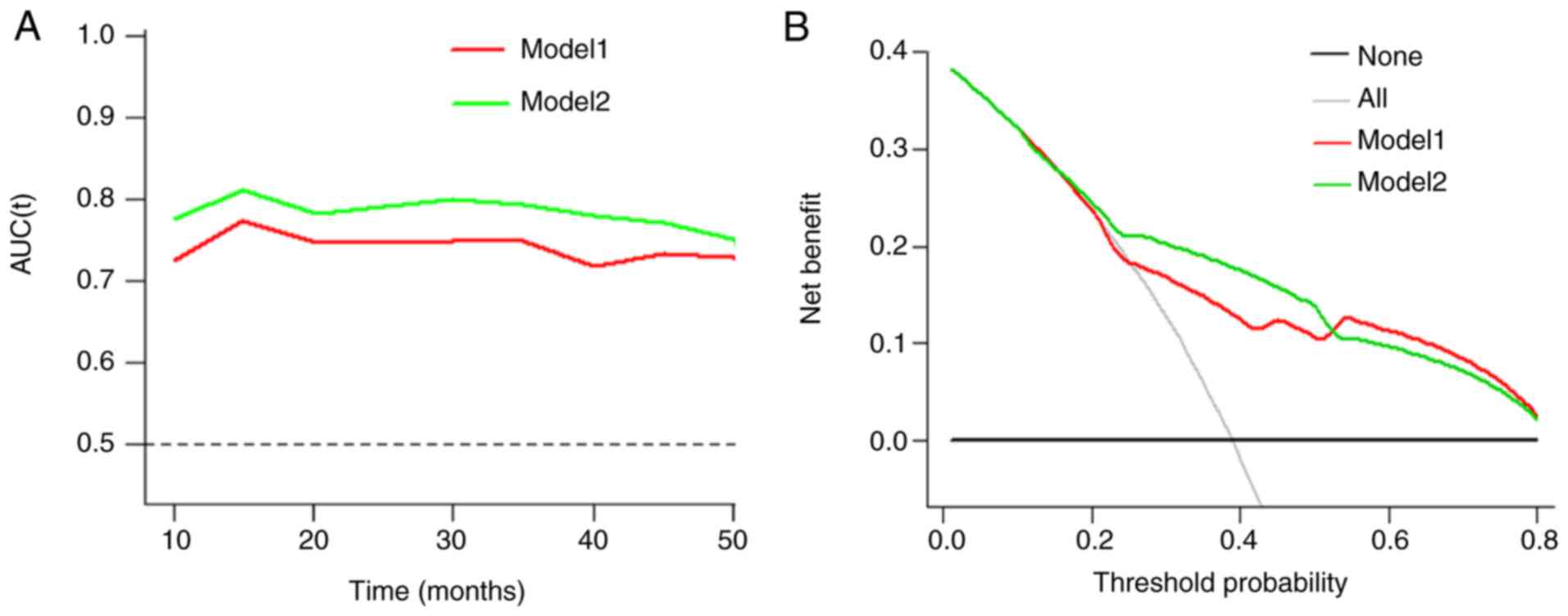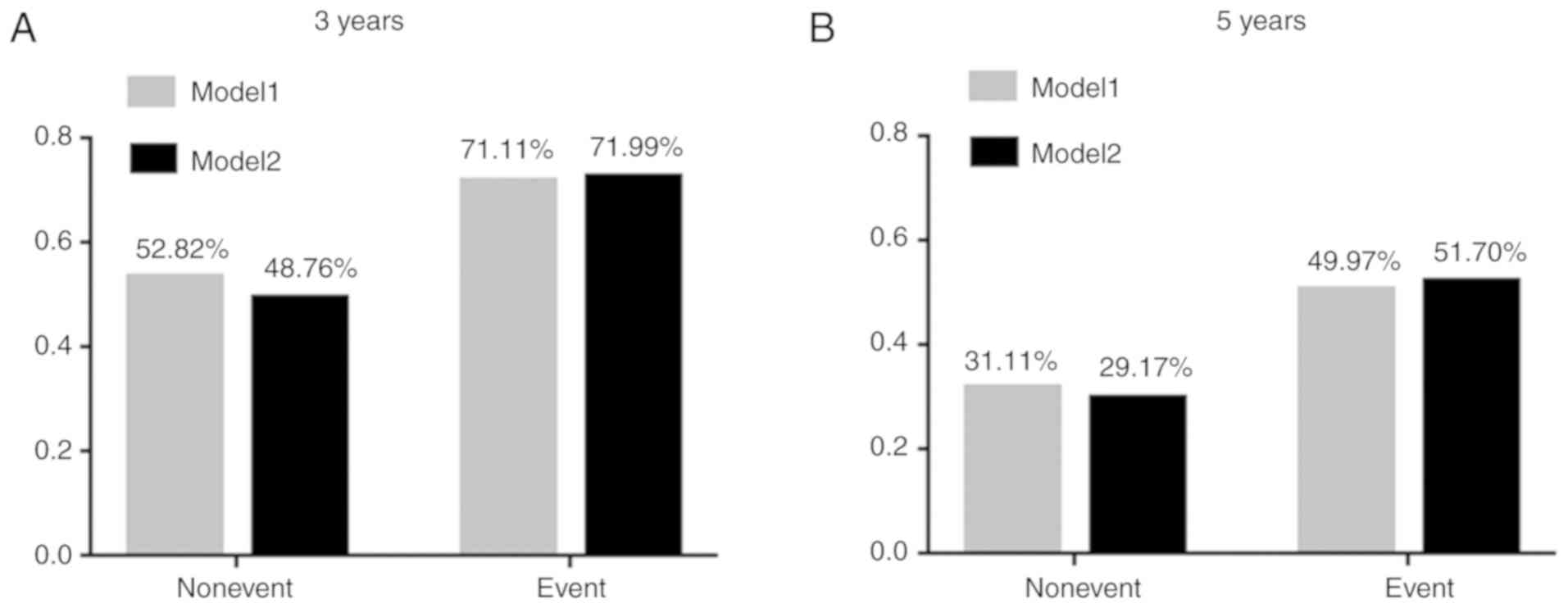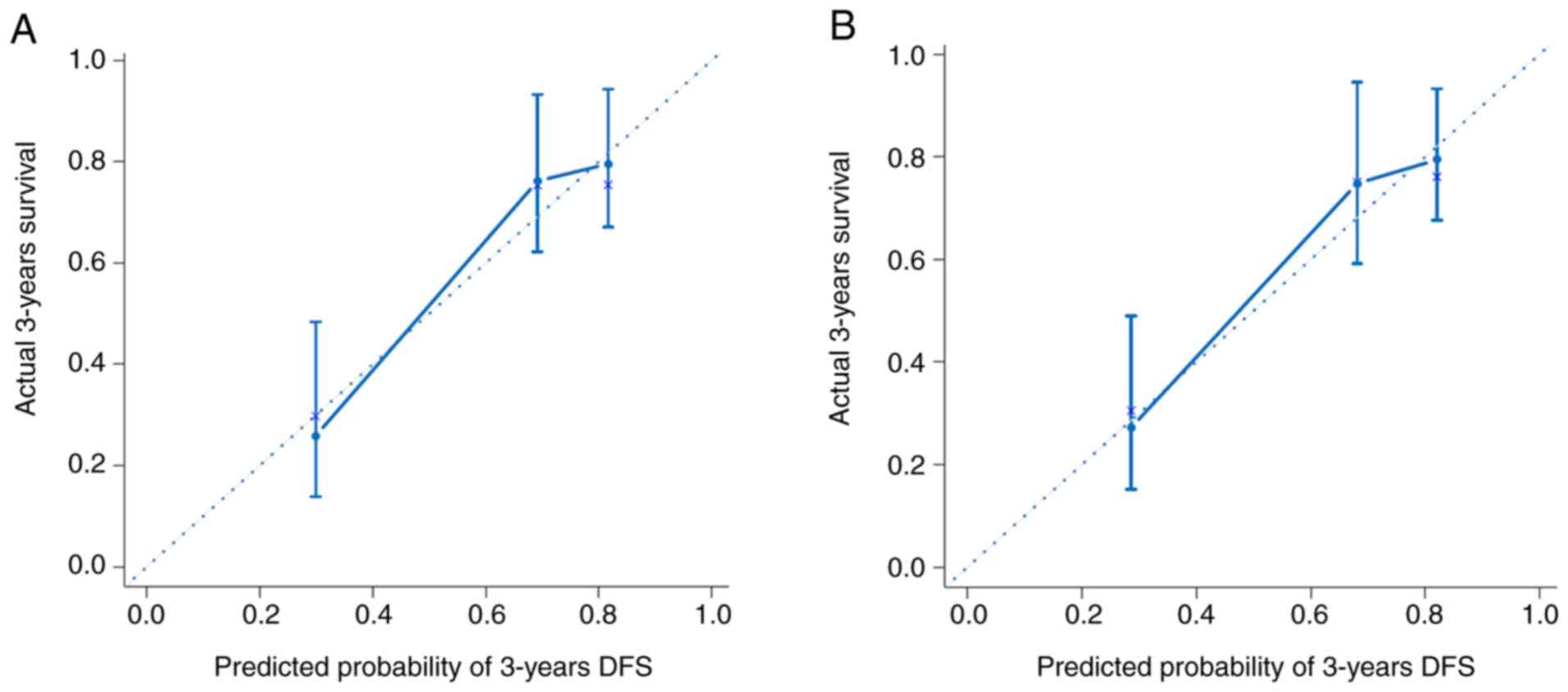|
1
|
Siegel RL, Miller KD and Jemal A: Cancer
statistics, 2018. CA Cancer J Clin. 68:7–30. 2018. View Article : Google Scholar : PubMed/NCBI
|
|
2
|
Wang C, Kar S, Lai X, Cai W, Arfuso F,
Sethi G, Lobie PE, Goh BC, Lim LHK, Hartman M, et al: Triple
negative breast cancer in Asia: An insider's view. Cancer Treat
Rev. 62:29–38. 2018. View Article : Google Scholar : PubMed/NCBI
|
|
3
|
Dent R, Trudeau M, Pritchard KI, Hanna WM,
Kahn HK, Sawka CA, Lickley LA, Rawlinson E, Sun P and Narod SA:
Triple-negative breast cancer: Clinical features and patterns of
recurrence. Clin Cancer Res. 13:4429–4434. 2007. View Article : Google Scholar : PubMed/NCBI
|
|
4
|
Inoue A, Yanagisawa M, Kimura S, Kasuya Y,
Miyauchi T, Goto K and Masaki T: The human endothelin family: Three
structurally and pharmacologically distinct isopeptides predicted
by three separate genes. Proc Natl Acad Sci USA. 86:2863–2867.
1989. View Article : Google Scholar : PubMed/NCBI
|
|
5
|
Bagnato A and Natali PG: Endothelin
receptors as novel targets in tumor therapy. J Transl Med.
2:162004. View Article : Google Scholar : PubMed/NCBI
|
|
6
|
Davenport AP, Hyndman KA, Dhaun N, Southan
C, Kohan DE, Pollock JS, Pollock DM, Webb DJ and Maguire JJ:
Endothelin. Pharmacol Rev. 68:357–418. 2016. View Article : Google Scholar : PubMed/NCBI
|
|
7
|
Namiki A, Hirata Y, Fukazawa M, Ishikawa
M, Moroi M, Aikawa J, Yabuki S and Machii K: Endothelin-1- and
endothelin-3-induced vasorelaxation via endothelium-derived nitric
oxide. Jpn J Pharmacol. 58 (Suppl 2):326P1992.PubMed/NCBI
|
|
8
|
Vacca F, Bagnato A, Catt KJ and Tecce R:
Transactivation of the epidermal growth factor receptor in
endothelin-1-induced mitogenic signaling in human ovarian carcinoma
cells. Cancer Res. 60:5310–5317. 2000.PubMed/NCBI
|
|
9
|
Green DS, Rupasinghe C, Warburton R,
Wilson JL, Sallum CO, Taylor L, Yatawara A, Mierke D, Polgar P and
Hill N: A cell permeable peptide targeting the intracellular loop 2
of endothelin B receptor reduces pulmonary hypertension in a
hypoxic rat model. PLoS One. 8:e813092013. View Article : Google Scholar : PubMed/NCBI
|
|
10
|
Morbidelli L, Orlando C, Maggi CA, Ledda F
and Ziche M: Proliferation and migration of endothelial cells is
promoted by endothelins via activation of ETB receptors. Am J
Physiol. 269:H686–H695. 1995.PubMed/NCBI
|
|
11
|
Spinella F, Caprara V, Garrafa E, Castro
V, Rosanò L, Natali PG and Bagnato A: Endothelin axis induces
metalloproteinase activation and invasiveness in human lymphatic
endothelial cells. Can J Physiol Pharmacol. 88:782–787. 2010.
View Article : Google Scholar : PubMed/NCBI
|
|
12
|
Wülfing P, Diallo R, Kersting C, Wülfing
C, Poremba C, Rody A, Greb RR, Böcker W and Kiesel L: Expression of
endothelin-1, endothelin-A, and endothelin-B receptor in human
breast cancer and correlation with long-term follow-up. Clin Cancer
Res. 9:4125–4131. 2003.PubMed/NCBI
|
|
13
|
Vasaikar S, Tsipras G, Landázuri N, Costa
H, Wilhelmi V, Scicluna P, Cui HL, Mohammad AA, Davoudi B, Shang M,
et al: Overexpression of endothelin B receptor in glioblastoma: A
prognostic marker and therapeutic target? BMC Cancer. 18:1542018.
View Article : Google Scholar : PubMed/NCBI
|
|
14
|
Bastian PJ, Ellinger J, Heukamp LC, Kahl
P, Müller SC and von Rücker A: Prognostic value of CpG island
hypermethylation at PTGS2, RAR-beta, EDNRB, and other gene loci in
patients undergoing radical prostatectomy. Eur Urol. 51:665–674.
2007. View Article : Google Scholar : PubMed/NCBI
|
|
15
|
Zhang L, Luo B, Dang YW, He RQ, Chen G,
Peng ZG and Feng ZB: The clinical significance of endothelin
receptor type B in hepatocellular carcinoma and its potential
molecular mechanism. Exp Mol Pathol. 107:141–157. 2019. View Article : Google Scholar : PubMed/NCBI
|
|
16
|
Cancer Genome Atlas Network, .
Comprehensive molecular portraits of human breast tumours. Nature.
490:61–70. 2012. View Article : Google Scholar : PubMed/NCBI
|
|
17
|
Ren G, Tian Q, An Y, Feng B, Lu Y, Liang
J, Li K, Shang Y, Nie Y, Wang X and Fan D: Coronin 3 promotes
gastric cancer metastasis via the up-regulation of MMP-9 and
cathepsin K. Mol Cancer. 11:672012. View Article : Google Scholar : PubMed/NCBI
|
|
18
|
Gu X, Han S, Cui M, Xue J, Ai L, Sun L,
Zhu X, Wang Y and Liu C: Knockdown of endothelin receptor B
inhibits the progression of triple-negative breast cancer. Ann N Y
Acad Sci. 1448:5–18. 2019. View Article : Google Scholar : PubMed/NCBI
|
|
19
|
Yoshihara K, Shahmoradgoli M, Martinez E,
Vegesna R, Kim H, Torres-Garcia W, Treviño V, Shen H, Laird PW,
Levine DA, et al: Inferring tumour purity and stromal and immune
cell admixture from expression data. Nat Commun. 4:26122013.
View Article : Google Scholar : PubMed/NCBI
|
|
20
|
Belkacemi Y, Hanna NE, Besnard C, Majdoul
S and Gligorov J: Local and regional breast cancer recurrences:
Salvage therapy options in the new era of molecular subtypes. Front
Oncol. 8:1122018. View Article : Google Scholar : PubMed/NCBI
|
|
21
|
Bianchini G, Balko JM, Mayer IA, Sanders
ME and Gianni L: Triple-negative breast cancer: Challenges and
opportunities of a heterogeneous disease. Nat Rev Clin Oncol.
13:674–690. 2016. View Article : Google Scholar : PubMed/NCBI
|
|
22
|
Berger Y, Bernasconi CC and
Juillerat-Jeanneret L: Targeting the endothelin axis in human
melanoma: Combination of endothelin receptor antagonism and
alkylating agents. Exp Biol Med (Maywood). 231:1111–1119.
2006.PubMed/NCBI
|
|
23
|
Wülfing P, Kersting C, Tio J, Fischer RJ,
Wülfing C, Poremba C, Diallo R, Böcker W and Kiesel L:
Endothelin-1-, endothelin-A-, and endothelin-B-receptor expression
is correlated with vascular endothelial growth factor expression
and angiogenesis in breast cancer. Clin Cancer Res. 10:2393–2400.
2004. View Article : Google Scholar : PubMed/NCBI
|
|
24
|
Joyce JA and Pollard JW:
Microenvironmental regulation of metastasis. Nat Rev Cancer.
9:239–252. 2009. View
Article : Google Scholar : PubMed/NCBI
|
|
25
|
Hanahan D and Weinberg RA: Hallmarks of
cancer: The next generation. Cell. 144:646–674. 2011. View Article : Google Scholar : PubMed/NCBI
|
|
26
|
Kalluri R and Zeisberg M: Fibroblasts in
cancer. Nat Rev Cancer. 6:392–401. 2006. View Article : Google Scholar : PubMed/NCBI
|
|
27
|
Beenken SW, Urist MM, Zhang Y, Desmond R,
Krontiras H, Medina H and Bland KI: Axillary lymph node status, but
not tumor size, predicts locoregional recurrence and overall
survival after mastectomy for breast cancer. Ann Surg. 237:732–739.
2003. View Article : Google Scholar : PubMed/NCBI
|
|
28
|
Kerr KF, McClelland RL, Brown ER and
Lumley T: Evaluating the incremental value of new biomarkers with
integrated discrimination improvement. Am J Epidemiol. 174:364–374.
2011. View Article : Google Scholar : PubMed/NCBI
|
|
29
|
Vickers AJ and Elkin EB: Decision curve
analysis: A novel method for evaluating prediction models. Med
Decis Making. 26:565–574. 2006. View Article : Google Scholar : PubMed/NCBI
|















